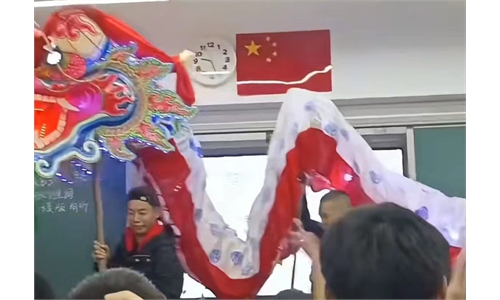ARTS / CULTURE & LEISURE
Schools should coordinate resources amid vacancy demand

Illustration: Liu Xidan/Global Times
Although it is still early for preschoolers to apply for school, the alarm has been rung that vacancies for schools in some cities such as Changchun, Guangzhou and Chengdu have already been "fully filled" as of January 2023. Some schools are indicating that admission qualifications will be decided based upon the date the students' family purchased their homes in the school district.
Population migration to big cities is a major reason for the strain in school vacancies. Despite a wave of school construction in the cities, the institutes in some cities are still having difficulty to meet the demand for enrollment. Many parents have also called for a quick expansion of key schools, though some schools say they are worried about fluctuations in the number of school-age children.
According to reports, this problem was also partly resulted from the wave after parents started to give birth to their "second-children" in 2016 and 2017, during which time China saw a rise in the number of newborns. These children are now all reaching school age.
Although the schools in some cities have been strained, it seems the situation is being blown out of proportion.
"Comparing with the base population of the country as a whole, we have seen only a small increase, so recent growth of demand for schooling will not have an impact on China's population policy," Yuan Xin, a professor from the Institute of Population and Development at Nankai University's School of Economics, told the Global Times.
China has adopted a policy of fine tuning and step-by-step expansion in education resources, under which related services including education will surely be adjusted accordingly in order to ensure smooth transitions, according to Yuan.
In fact, the lack of seats at some key schools in major cities lies in today's imbalanced education distribution as China is a developing country that still suffers from insufficient development. Yet over the past 10 years, it has adopted many measures such as building or renovation of schools, or improving underdeveloped schools. For example, in early 2023, Beijing's Haidian district, the educational center of the city, started an expansion project by creating an additional 5,560 vacancies at primary and middle schools. Its key schools have integrated their surrounding schools into an overall curriculum by helping train teachers and improve their management standards. In Beijing's Tongzhou district, the sub-center of the capital, several key schools have set up "one-on-one" assistant relations with their counterparts in this district.
Additionally, even if some enlarged schools experience decreased enrollment, "this is actually a good opportunity for them to decrease the size of classes from 45 students to maybe 25 or 30 so as to improve education standards and leave some 'elastic space' for a future rebound."
The 20th CPC National Congress Report established a policy of accelerating high-quality, balanced development and urban-rural integration in compulsory education, and better allocating educational resources across regions. As schools have decreased the burden of homework and after-class tutoring, students can be given more personalized attention in small-sized classes.
Therefore, no matter how China's birthrate rises or declines, overall policies for ensuring education for all will remain stable. Even if there could be specific adjustments, they will just be for a certain period of time with a view toward the long-term trend, just as Yuan noted. The Chinese government will attach the same importance to education as before. With the improvement of China's education policy, more supporting policies could be expected to provide resources and better coordinate the capacity at schools.



